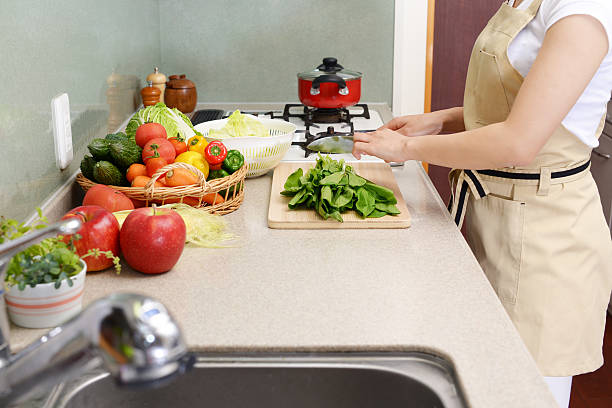Food Safety Guidelines
Top Food Safety Practices for Home Cooking to Avoid Risks and Promote Wellness
Ensuring food safety in your home kitchen is essential to avoid foodborne illnesses and promote overall wellness. Adhering to proper food handling, cooking, and storage practices helps reduce the risk of contamination and keeps your meals safe and nutritious. Here are the top food safety practices to follow in your home cooking routine:
1. Wash Your Hands Thoroughly
Why It’s Important: Hands can carry bacteria and viruses that can transfer to food, leading to contamination.
How to Do It:
- Use Soap and Water: Wash hands with soap and water for at least 20 seconds before and after handling food, especially raw meat, poultry, seafood, and eggs.
- Dry Hands: Use a clean towel or air dryer to dry your hands.
2. Keep Your Kitchen Clean
Why It’s Important: A clean kitchen reduces the risk of cross-contamination and the spread of bacteria.
How to Do It:
- Clean Surfaces: Regularly clean countertops, cutting boards, and utensils with hot, soapy water.
- Sanitize: Use a food-safe sanitizer for surfaces and equipment that come into contact with raw foods.
- Disinfect Sponges: Replace or disinfect sponges and dishcloths frequently to prevent bacterial growth.
3. Separate Raw and Cooked Foods
Why It’s Important: Preventing cross-contamination between raw and cooked foods is crucial for food safety.
How to Do It:
- Use Separate Cutting Boards: Designate separate cutting boards for raw meats and vegetables.
- Store Properly: Store raw meats and seafood in sealed containers on the bottom shelves of the refrigerator to avoid dripping onto other foods.
4. Cook Foods to the Right Temperature
Why It’s Important: Proper cooking kills harmful bacteria and pathogens.
How to Do It:
- Use a Food Thermometer: Check the internal temperature of meats, poultry, and seafood to ensure they reach safe cooking temperatures (e.g., 165°F for poultry, 145°F for fish).
- Follow Guidelines: Refer to recommended cooking temperatures for different foods to ensure safety.
5. Store Food Properly
Why It’s Important: Proper storage helps prevent the growth of bacteria and extends the freshness of food.
How to Do It:
- Refrigerate Promptly: Store perishable foods in the refrigerator or freezer within two hours (or one hour if the temperature is above 90°F).
- Use Airtight Containers: Keep food in airtight containers to maintain freshness and prevent contamination.
- Label and Date: Label and date leftovers to ensure they are used within a safe timeframe.
6. Handle Food Safely When Thawing
Why It’s Important: Thawing food improperly can lead to bacterial growth.
How to Do It:
- Refrigerator Thawing: Thaw frozen foods in the refrigerator to keep them at a safe temperature.
- Cold Water Thawing: If you need to thaw food quickly, use the cold water method (submerge in cold water, changing the water every 30 minutes) and cook immediately after thawing.
- Avoid Room Temperature: Do not thaw food at room temperature as it can cause bacteria to multiply rapidly.
7. Be Mindful of Food Expiration Dates
Why It’s Important: Consuming food past its expiration date can pose health risks.
How to Do It:
- Check Labels: Regularly check and adhere to expiration dates on packaged foods.
- Follow “Use By” Dates: Use perishable items by their “use by” dates to ensure safety and quality.
8. Practice Safe Food Preservation
Why It’s Important: Proper preservation techniques help maintain the quality and safety of home-preserved foods.
How to Do It:
- Follow Recipes: Use tested recipes and guidelines for canning, freezing, and drying to ensure safety.
- Check Seals: Ensure that canned goods have proper seals and are stored in a cool, dark place.
9. Avoid Eating Raw or Undercooked Foods
Why It’s Important: Raw or undercooked foods can contain harmful bacteria and pathogens.
How to Do It:
- Cook Thoroughly: Ensure that foods like eggs, meats, and seafood are cooked thoroughly.
- Be Cautious with Raw Foods: Limit the consumption of raw foods, such as sushi or raw eggs, if you are at higher risk for foodborne illnesses.
10. Educate Yourself and Others
Why It’s Important: Knowledge of food safety practices helps ensure a safe cooking environment for everyone.
How to Do It:
- Stay Informed: Keep up-to-date with food safety guidelines and best practices.
- Share Knowledge: Educate family members and household members about food safety practices.
Conclusion
Implementing these food safety practices in your home kitchen will help you avoid foodborne illnesses and promote wellness. By maintaining cleanliness, handling food properly, and adhering to safe cooking and storage practices, you can enjoy delicious and safe meals every time.

